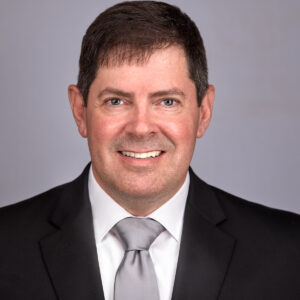A Model of Multifacility Management
| BY KEVIN R. McMAHON |
| A model of multifacility management A grateful administrator describes the business approaches that allowed a facility in transition to emerge and shine |
| Within weeks of meeting and starting work for Provider Services, Inc., I knew there was something different about this company’s philosophy and approach to operating nursing homes. In the Provider Services model, the facility administrator is the linchpin and the focal point for all that flows between the corporate office and the facility. Those who work in the corporate office treat administrators with a strong measure of dignity and respect-the facility administrators are the ones who are empowered to make operational decisions supported by the corporate office. Administrators who work for Provider Services are typical long-term care professionals: They come from a variety of backgrounds-but almost to a man/woman, they have experienced working for organizations that view micromanagement as a mandate from the hand of God himself. In Provider Services they have found a company that truly believes in unshackling administrators and permitting them to do their jobs as conditions in their facilities dictate. This has created in this multifacility chain a culture of measured risk taking and independent action that has allowed Provider Services to grow. It has also created a culture of loyalty and appreciation between facility staff and the corporate office that I have never before experienced in my career as an administrator. The Little Picture Administrators in the Provider Services system are given wide latitude to act as de facto owners/operators within their sphere of control. This sphere of control is condensed and focused on areas that administrators can realistically control and that will have a demonstrable impact, both on their success and that of the overall operation. These areas include: Census. Many companies are built around the concept of marketing specialists and consultants planning and, in some cases, executing facility marketing plans. Too often these specialists do not fully understand the facility that they are marketing in terms of its operational environment. It has also been my experience that these marketing specialists/consultants have graduate-level degrees in “blame-gaming” operational personnel when their genius-inspired marketing plans don’t produce a correspondingly healthy census number. Provider Services believes that the administrator, along with facility staff, is best suited to develop and execute marketing plans. The company’s creed is that no one knows the local market better than those who live and work in that particular community. The company’s approach is to provide each facility with a sufficient number of marketing dollars and then get out of the way and let the facility do what it thinks best. Provider Services also provides regular reporting mechanisms so that facilities know exactly how they are doing with respect to budgeted census (totals and level-of-care mix). Controllable fiscal realities. Many companies believe in absolute full disclosure when it comes to reporting corporate financial performance to facility administrators. This would include such items as revenues, uncontrollable expense line items, and operating margins. While this may make sense in theory, in the practical world of long-term care administration, the uncontrollable can overwhelm all but the most hopelessly optimistic or downright delusional administrators. Provider Services believes that administrators should focus on controllable items on the financial side of the operation. The thinking goes that an hour of concerted attention by an administrator focusing on a controllable expense item that is out of budget will beat eight hours of worry about how to get the natural gas bill down to the level it was five years ago (or some other such uncontrollable financial situation). A key focus: Facility administrators regularly and dutifully monitor and respond to labor expenditures. Leadership. From a corporate leadership standpoint, Provider Services has a decidedly low-key approach to the facilities that it operates. By contrast, I once worked for an owner who loved playing the “large-and-in-charge” role to the hilt whenever he made one of his regular, beautifully choreographed triumphal visits to his overawed facility. Provider Services, on the other hand, supports the administrator from a distance and behind a thick velvet curtain (metaphorically speaking). Administrators are encouraged to step forward as the people in charge, as the officials who are ultimately responsible for the good things that happen. (And when bad things happen, as they inevitably do, Provider Services does not point fingers or second-guess, but rather focuses on fixing the problem.) This low-key approach not only allows administrators and department directors to be in charge of their areas, but to be perceived as such by residents, families, and staff. The Big Picture Clinical/regulatory area. Clearly this is the one area that is most subject to change and, at the same time, the most technically demanding. Provider Services has a group of registered nurses who function as clinical/regulatory specialists. They focus on standardizing those areas of the clinical operation that are most subject to regulatory scrutiny by survey agencies and/or are the most sensitive from a risk-management standpoint; i.e., high-volume, high-risk, and/or problem-prone areas. Reimbursement. Medicare/Medicaid reimbursement is the lifeblood of any nursing facility. It is also, of course, technically complex and subject to frequent change by the government officials who ride herd on these huge programs. Provider Services devotes significant corporate resources to capture third-party funding while maintaining strict billing compliance. Human resources. Among the areas allowing greater autonomy for administrators are the processes for evaluating and disciplining employees. Provider Services also allows facilities independence in building esprit de corps among facility staff, including providing generous amounts of discretionary money to reward and motivate employees. Also, from payroll administration to workers’ compensation to benefits administration, the complex is made simple for employees and HR staff to understand. A Case in Point The two investors who purchased the facility reopened it and began to operate it, renaming the facility The Merriman. It soon became obvious to these investors that the industry they had worked in 20 years ago bore no resemblance to the environment they faced, as they struggled to establish The Merriman and make it a going concern. Rather than continue to operate it themselves, they decided to lease the operation to an organization with the know-how to manage in today’s turbulent waters-the aforementioned Provider Services. Challenges were met by staff, supported by Provider Services, issue by issue. For example: Census. The most pressing issue facing the facility was its census. Not only had the previous nonprofit operator taken 80% of the residents from the building, there was a generally held perception within the community that the facility had ceased operations altogether once it moved to its new campus. As a result, census was stagnant and quite low, especially on the assisted living side, which is so dependent on marketing and advertising to nonhospital-based referral sources and the general consuming public. When The Merriman began to operate, 12 residents lived in assisted living. This had grown marginally to 18 residents in August 2004 when Provider Services arrived on the scene. By the end of 2005, the census had grown to 60 residents. This dramatic increase in census related directly to two factors. First and foremost, Provider Services allowed the facility to spend money on marketing, advertising, and developing new service options. These initiatives were many and varied and, fortunately, bereft of entanglements and the need to run them past multiple layers of reviewers/approvers at the Provider Services corporate level. Our proposals usually elicited a “yes” in quick fashion. The initiatives included a low-budget, homegrown advertising campaign built around the catchphrase “Still Living the Good Life at The Merriman means….” The campaign highlighted satisfied customers and our special strengths, such as a culinary program run by an executive chef, our location and setting, and the quality of the care and services we provide. Second, we added a memory care unit on an assisted living floor that was, compared with our other assisted living accommodations, the least desirable aesthetically, thus upgrading its appeal operationally. At every step of the way, Provider Services trusted facility management to realize the facility’s unique strengths and then determine how best to exploit them and, finally, get the word out to the community. Leadership. Whenever an organization goes through multiple transitions, feelings of uneasiness and unsettledness become all too common. Having endured the departure of the nonprofit and the failed attempt at self-operation, The Merriman was no stranger to uncertainty, and it created some very difficult dynamics among staff, residents, and families. The greatest manifestation of these dynamics was an insatiable need for some residents, families, and staff to deal with someone “higher up” on the corporate ladder. The consistent response from Provider Services’ personnel was to defer to facility staff. Company leaders would insist time and again that they had faith in the department directors and me to continue to operate the facility properly. That consistent affirmation established a sense of control and order for facility management that was sorely needed in light of the turmoil the facility was experiencing. As a result of a lot of hard work by every staff member and a good measure of luck or God’s grace, the results that Provider Services was seeking were realized. Even if things had gone unalterably wrong for The Merriman, I think that we would have felt that, as managers, we had given it our best shot and simply failed. People get fired for many reasons, but at least we would have been fired for what we were directly controlling. As positive results were realized, however, and Provider Services granted greater operational latitude, a snowball of increasing positive operational and financial outcomes soon became evident to all. Clinical/regulatory areas. Soon after the arrival of Provider Services, The Merriman went through some very deep regulatory waters. A bad survey and series of emotionally charged complaint-investigation surveys within the first six months are not the way an administrator wants to start out with a new employer-but that was how I began my tenure with Provider Services. As many readers of this magazine know, the long-term care regulatory process can be very punishing and unforgiving. However, Provider Services was mercifully short on second-guessing and recriminations, and very disposed toward supporting and reassuring the clinical staff, who were fighting a seemingly endless succession of battles. The company’s approach to establishing standard clinical protocols and procedures and employing a committed, competent, and creative nursing staff resulted in a perfect survey for The Merriman later that year. Human resources. The owner/operators who gave birth to The Merriman were not in a position at the time to deliver a lot of human resources programs and employee benefits to the loyal, trusting, and dedicated facility staff who remained at The Merriman. Many employees trusted that such benefits as dental insurance and an employee handbook would someday materialize. Nine months later when Provider Services arrived, their patience was rewarded. Provider Services not only provided a broad range of affordable benefits, but gave the facility the resources it needed to seamlessly administer everything from workers’ comp to payroll to benefits. Final Analysis Kevin R. McMahon is Administrator of The Merriman in Akron, Ohio. He has been an administrator of long-term care facilities since 1984. For further information, phone (330) 762-9341, ext. 2215, or visit www.provider-services.net. To send your comments to the author and editors, e-mail mcmahon1006@nursinghomesmagazine.com . |
I Advance Senior Care is the industry-leading source for practical, in-depth, business-building, and resident care information for owners, executives, administrators, and directors of nursing at assisted living communities, skilled nursing facilities, post-acute facilities, and continuing care retirement communities. The I Advance Senior Care editorial team and industry experts provide market analysis, strategic direction, policy commentary, clinical best-practices, business management, and technology breakthroughs.
I Advance Senior Care is part of the Institute for the Advancement of Senior Care and published by Plain-English Health Care.
Related Articles
Topics: Articles , Facility management , Operations , Staffing











